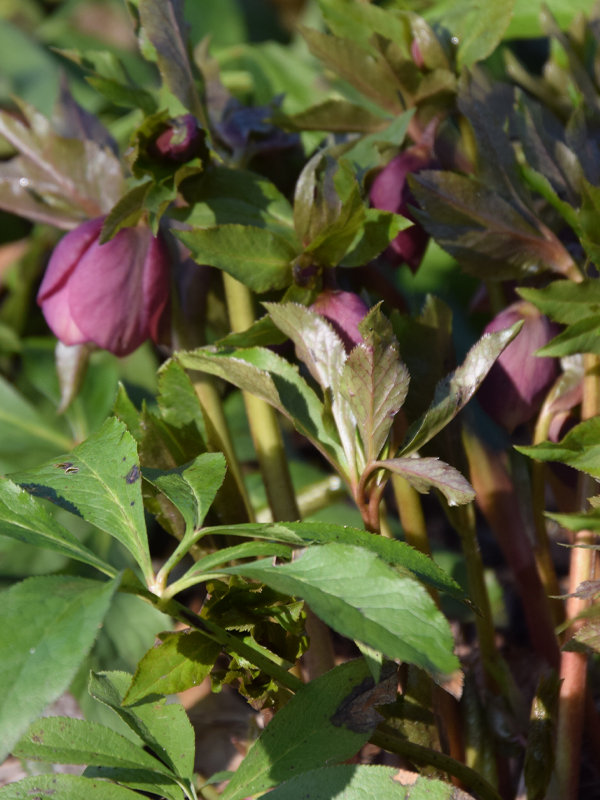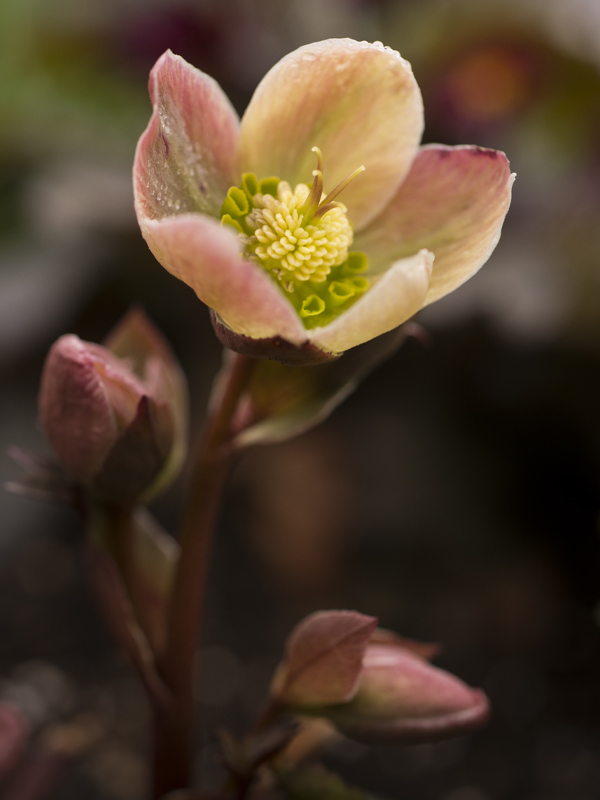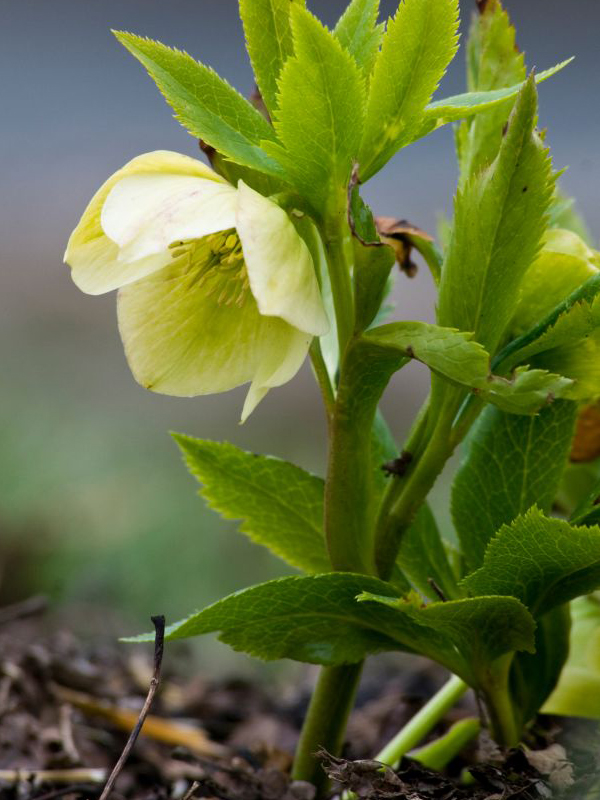

Hellebores
Helleborus
Gardening in shade can be challenging for gardeners who want to grow great plants. That’s where hellebores come to the rescue. They grow in part- to full-shade areas and prefer moist, well-drained soil with plenty of organic matter. Once they’re established, they are tough plants that withstand drought and neglect.
Hellebores are special because they bloom when little else is in flower. The Christmas rose (Helleborus niger) blooms in late winter while the Lenten rose (Helleborus orientalis) blooms in very early spring when most perennials have yet to start growing. Although the flowers and leaves may droop after a snowfall, they soon recover.
Stinking hellebore (Helleborus foetidus) gets its unfortunate name from the unpleasant scent that results when the leaves or flowers are bruised. The plant produces clusters of green buds early in the year that open to greenish-white flowers tipped with purple.
There are about 20 species of hellebores that inhabit Europe and Asia. The leaves tend to be evergreen for most of the year and plants bloom for almost two months before the flowers begin to fade. Although many hellebores have nodding, cup-shaped flowers, some cultivars have upward-facing blooms. Depending on the species or cultivar, flowers may be single, double, white, pink, purple, green, dark burgundy, deep rose, speckled, or bicolored. Plants range in size from about 9 to 18 inches tall and 12 to 24 inches wide. Hellebores contain toxic chemicals and this makes them unappealing to deer and other wildlife.
Notable Cultivars
Blushing bridesmaid (Helleborus ‘Blushing Bride’) bears clusters of white double flowers that are 2 inches wide with crimson veins and edges. It is one of more than two dozen unusual hellebore cultivars grown at the Garden.
Lenten rose and stinking hellebore grow in the English Walled Garden and Spanish flare hellebore grows near the Waterfall Garden. In the Heritage Garden, you’ll find Helleborus 'Walhelivor'.
Caucasus hellebore (Helleborus caucasicus) was collected in the wild by Chicago Botanic Garden staff in the Republic of Georgia in the Southern Caucasus Mountain range. Some are grown in the Farwell Landscape Garden.
Care
Hellebores dislike being moved, so choose a permanent location before you plant. Select a spot where the plants will be protected from cold winter winds, which can dry the evergreen leaves. If you plant them under deciduous trees, the leaves will receive full sun in winter, but will be protected in summer by the overhead shade. Keep newly planted hellebores slightly moist until they are well established. Once the leaves dry in late winter, cut or rake them away before the new growth emerges.
Hellebores at the Garden
Check out our Plant Finder to discover the hellebore species growing at the Garden.
Plant Community
Hellebores are well-behaved perennials that are long-lived and make good companions.
Try planting hellebores with:
- Epimedium
- Hosta
- Mukdenia
- native ferns
- columbine
- perennial geraniums
- merry bells (Uvularia grandiflora)
- crocus
- snowdrops.





